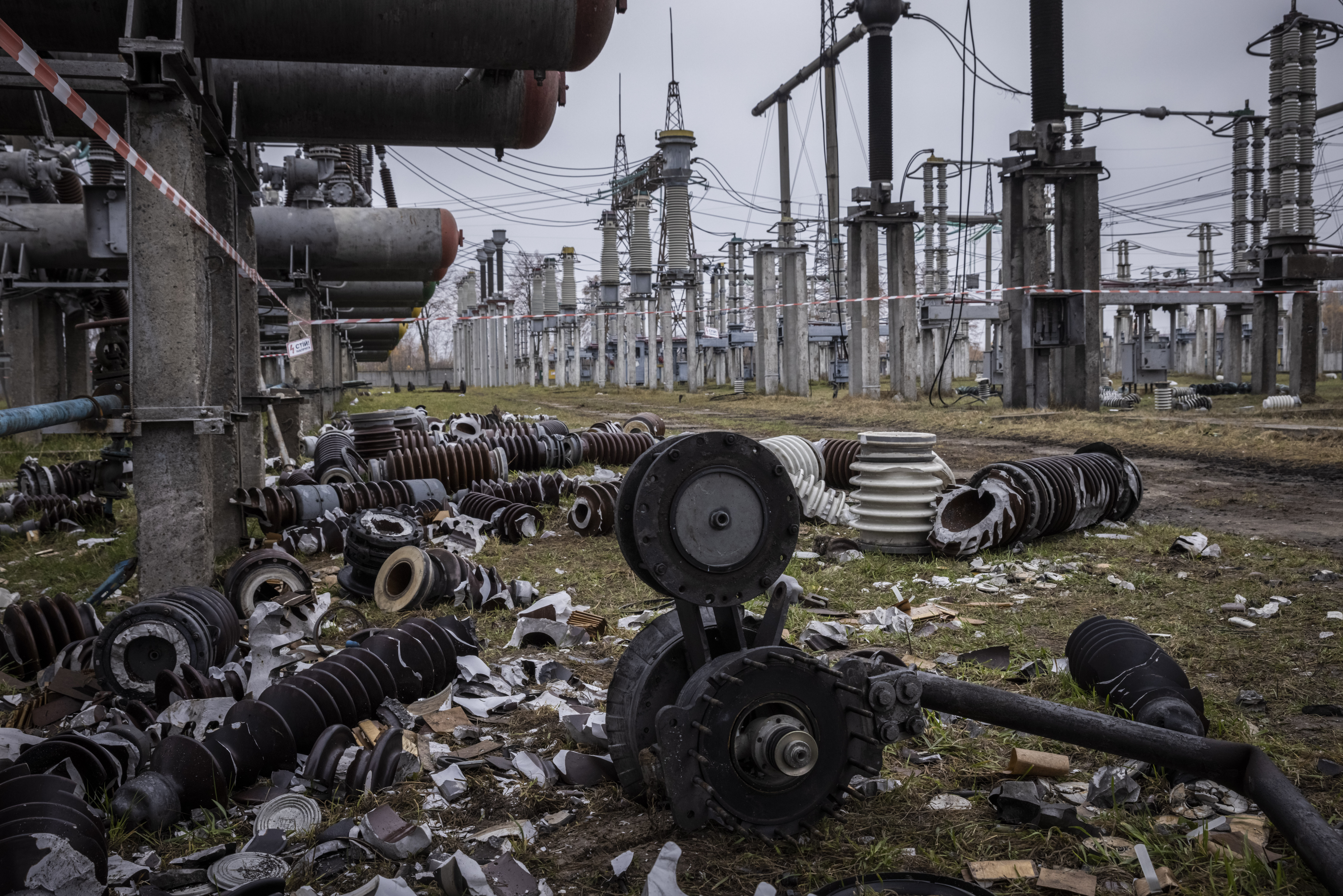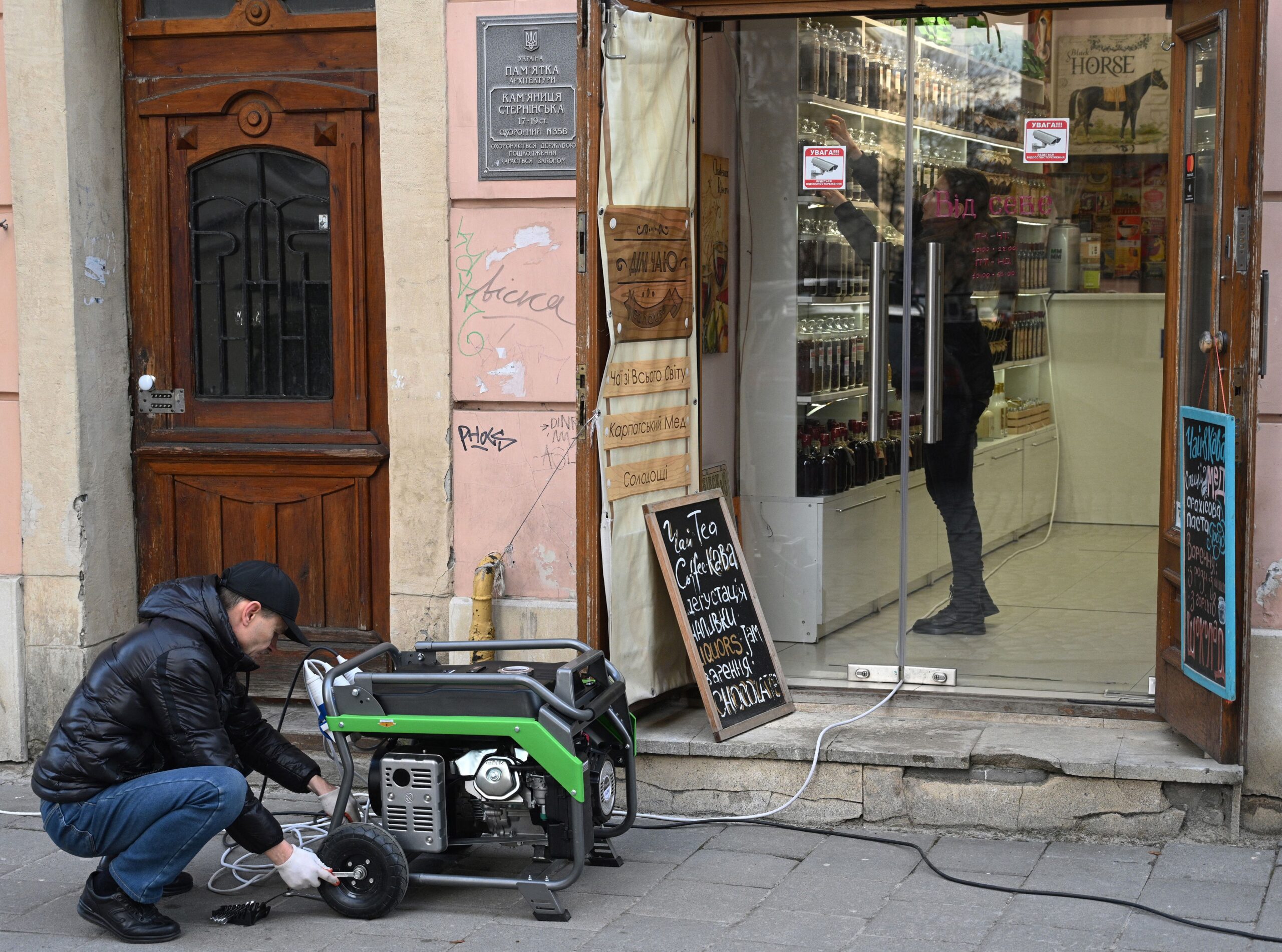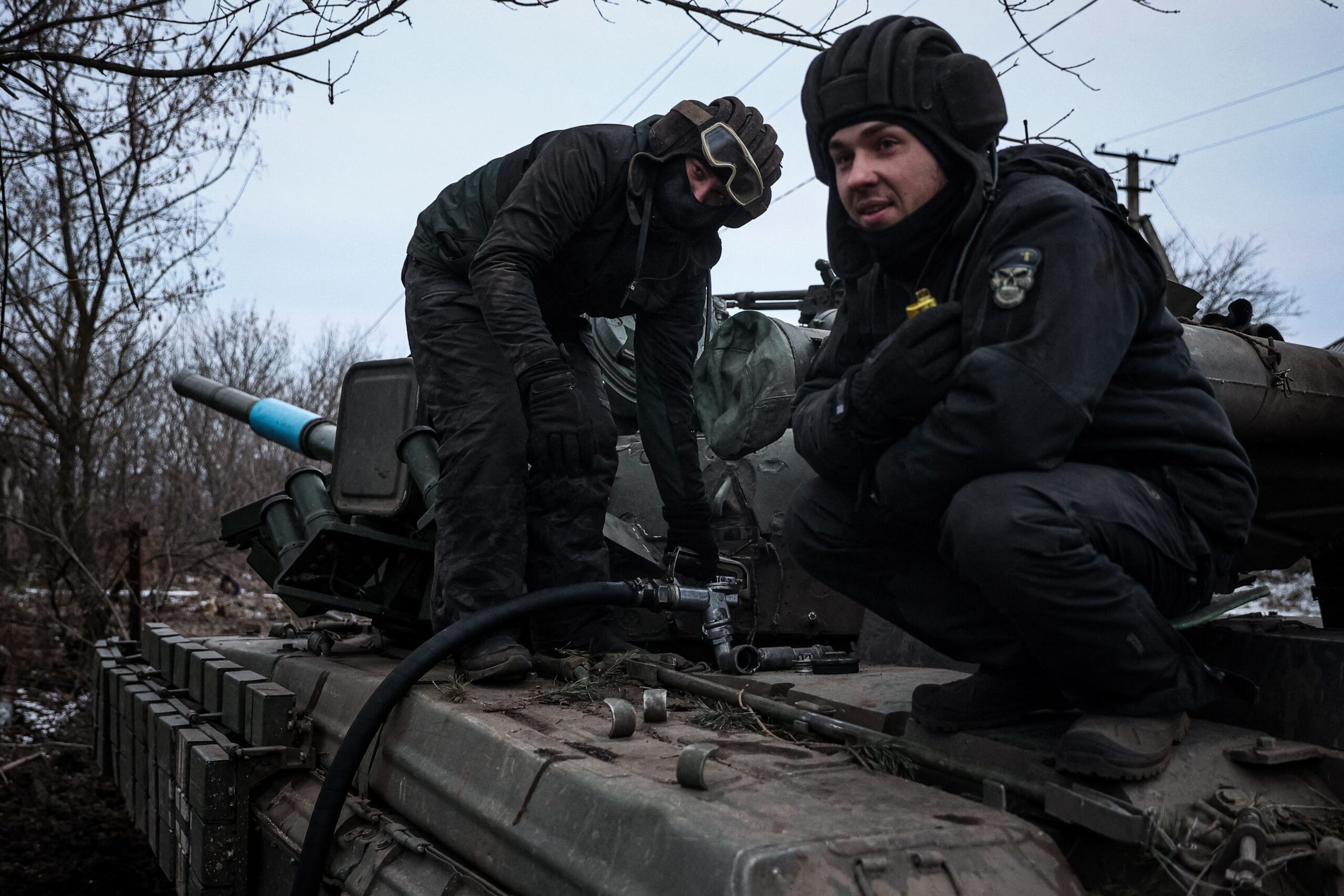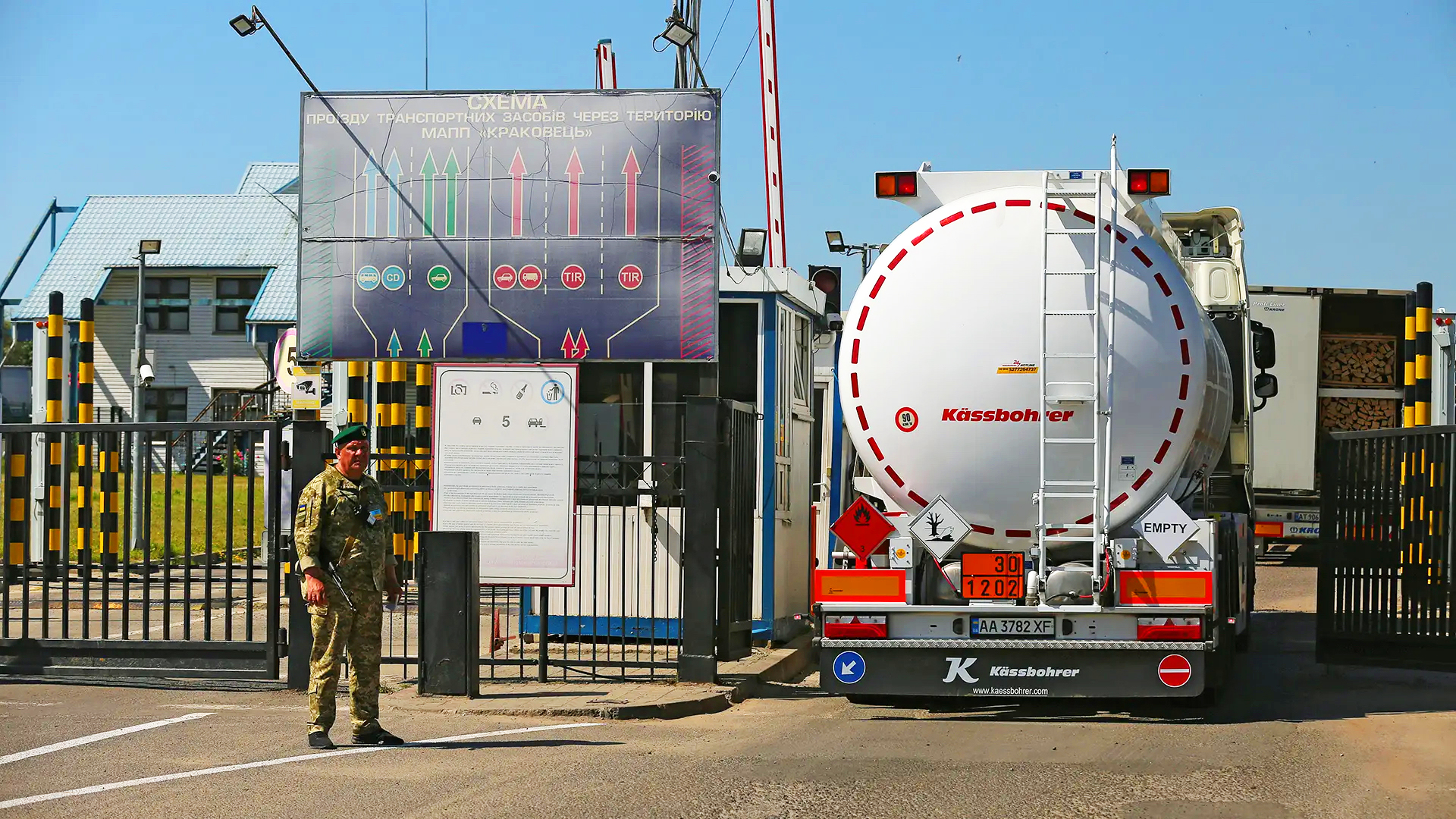Despite massive Russian attacks against its power and fuel supply infrastructure, Ukraine claims it has actually increased its fuel reserves to the point of surplus thanks to the influx of imports and an innovative logistics operation using thousands of fuel trucks as mobile storage sites.
Ukraine began receiving large amounts of fuel in January from the U.S., and over the course of Russia’s all-out invasion, purchased thousands of fuel tanker trucks to create a mobile storage system, said Serhiy Kuyun, director of the A-95 Consulting Group, a Ukrainian fuel market research firm.

“Revolutionary changes have taken place,” in the Ukrainian fuel supply chain, Kuyun told reporters Wednesday during a briefing at the Ukrainian Media Center. “There has never been this [American] fuel in Ukraine. There is also fuel from Taiwan, India, and the Netherlands.”
That’s a change from before Moscow’s full-on invasion, when Ukraine received the majority of its fuel from Russia and Belarus.
But beyond new sources of fuel, Ukraine has developed a mobile storage method that Kuyun claims defies Russian attempts to bomb its supplies out of existence.
Ukraine “bought all the fuel tank trucks that were available in Europe,” he said.
He did not say when those purchases took place, who funded them or how much they cost. But they’ve made a huge difference, he claimed.
“The logistics system has radically changed,” he said. “Before the war we supplied fuel by rail and sea, now 40% of our supplies are road transport. These are thousands of gasoline trucks that from a security vantage point are impossible to catch. You can bomb an oil depot, an oil refinery, aim at a railway station. But what to do with these thousands of gasoline trucks? This is a revolutionary thing.”
Having so many mobile points of storage takes advantage of one of Russia’s most glaring problems.
It lacks the ability to hit dynamic targets beyond the front lines, something we noted early on in this conflict.
Kuyun claims this system passed its first test in November and December, “when there was a surge in the use of generators” in the wake of massive Russian missile strikes on Ukraine’s power infrastructure.

Those attacks severely impaired Ukraine’s ability to generate electricity and forced municipalities and residents to rely on generators, which require fuel.
“Due to blackouts there was an explosive growth of use of generators and it tested the supply of fuel back then,” he said. “We were through that period [with] no deficit either of diesel fuel or gas. And it allowed the private consumers and their businesses to go through this period.”

Though Ukraine is currently enjoying a fuel surplus, the situation was bleak last April, said Kuyun.
Russia, as we reported at the time, executed a number of standoff missile strikes on petroleum storage areas and facilities in the western and central part of the country aimed at choking off Ukraine’s ability to fuel its fight.
“There was a critical situation,” said Kuyun. “As of the beginning of April, we lost 100% of the pre-war sources of supply of petroleum products. It was a situation that no country in the world faced. No one in the world believed that we would be able to restore supplies and provide for the military, the economy, and consumers.”
But by July of last year, there was no more fuel deficit, Kuyun claimed.
“Three months passed and the country did not feel a shortage, it felt a surplus of oil products of all brands,” he said. “We’ve built new logistic chains for fuel supply. This new system is way more diversified, way more flexible, and apart from the fact that there are the new countries that we supply fuel from.”
Ukraine has received a “massive supply of American diesel fuel that started in January and the scale is growing in February and it emphasizes those revolutionary changes,” he said. “No such fuel was ever present in Ukraine.” Combining that with fuel received from other countries shows “how geographically diversified the supply network is.”
Kuyun did not offer any details about exactly how much fuel Ukraine is receiving from the U.S. and allies. We’ve reached out for additional details and will update this story with any information provided.
While the sources and internal storage methods have changed, the majority of the fuel is still transported into Ukraine through Poland, Romania and Bulgaria, said Kuyun.
Last year, a Ukrainian company “procured a pretty big terminal in Poland and the scale of supplies through the terminal keeps growing,” said Kuyun. “It’s a stable flow of fuel products.”
Another factor in Ukraine’s current fuel surplus is that the all-out war has damaged the economy and reduced territory. Even in areas still in Ukrainian hands, the war has devastated the agrarian industry, further reducing the need for fuel. That combination of factors has lowered fuel consumption, Kuyun said.
“We have more fuel in the market today than it was previous year when the consumption was bigger,” he said.
Throughout this conflict, Ukrainian officials have been reluctant to talk about military fuel supply levels and logistics. Even Ukraine’s incredible online information war, loaded as it is with videos from frontline operations, never seems to show any signs of fuel logistics. This is something we have been wondering about for a while.
Kuyun did not address how much fuel the military is receiving or whether it is still facing any shortages given the challenges of supply in a dynamic combat environment.

On Monday, however, NATO Secretary General Jens Stoltenberg listed fuel as among the concerns he had about keeping Ukraine supplied as Russia unleashes its offensive in the east.
“Key capabilities like ammunition, fuel, and spare parts must reach Ukraine before Russia can seize the initiative on the battlefield,” Stoltenberg told reporters.
Despite that hint of concern, a fuel surplus resulting from improved supply and logistics seems like it would be good news for a nation at war requiring stable supplies to keep its tanks, infantry fighting vehicles, mobile air defense systems and many other military vehicles running.
UPDATE 9:53 A.M. EST:
We received a response overnight from Artem Kuyun, senior analyst the A-95 Consulting Group.
“During 2022, Ukrainian petroleum trading companies have bought near[ly] 600 new trucks and more than 2,000 used trucks in EU and Turkey…”
“There were some problems with quick purchasing at the start of the full-scale war but we can make good offers to sellers.”
“Concerning your other questions. We do not comment on any issue about military fuel usage, including Jet fuel. Sorry”
Contact the author: howard@thewarzone.com
